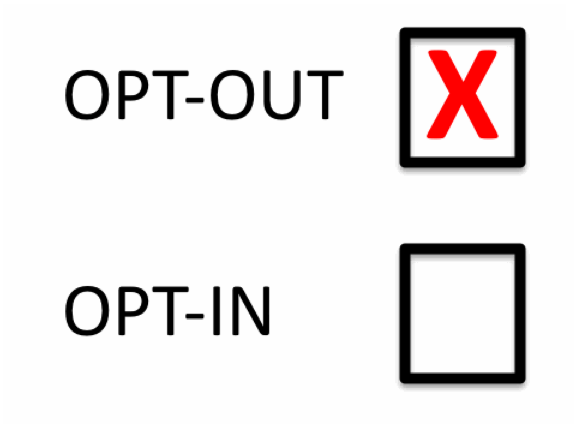 I give a lot of credit to the Council of MLS for their commitment to understanding the issues with listing syndication and formulating an effort to fix it. In the first place, the failure of many MLSs to understand listing syndication has been the cornerstone of the problems that exist today. Here is a little history lesson.
I give a lot of credit to the Council of MLS for their commitment to understanding the issues with listing syndication and formulating an effort to fix it. In the first place, the failure of many MLSs to understand listing syndication has been the cornerstone of the problems that exist today. Here is a little history lesson.
In the beginning, only a few brokers with their own IT staff were able to supply a feed of their listings to publishers. When a broker has hundreds of listings or tens of thousands of listings like Howard Hanna, Prudential Fox and Roach and others, the concept of manually entering and updating listings on multiple websites was a daunting task. Automation was demanded to create function and efficiency. In most cases, the automation was already in place. For these big brokers, publishing to the newspaper every week was equally daunting, so that was already automated. The data was in the database but it just needed to be moved. One problem still remained and that was keeping the database accurate. Agents would often update the price and other information in the MLS, but not in the broker database. This too was solved by MLSs providing a data feed into the brokerage. At this point – all was good for big brokers, but small and mid-sized brokers were in need of help.
Listing Syndication Emerges
Northern Nevada Regional MLS is not a big MLS. They are right-sized, and centered in Reno, Nevada. Their largest brokers have a few hundred agents, but the bulk of their brokers are small and remote. Under the leadership of Merri Jo Cowen, they were among the first MLSs in the nation to launch a service from a start up company called Listhub. WAV Group was invited to do a Listing Syndication effectiveness study on this market and we found that brokers loved it. At the time, there was no other listing syndication solution on the planet for an entire MLS. It was free and the MLS did the heavy lifting for the brokers. All was good and adoption was in the 80% range.
Then All Hell Broke Loose
Magazine publishers like Homes and Land began to syndicate. Franchises began to syndicate. IDX vendors began to syndicate. Virtual Tour companies began to syndicate. Agents began to hand submit listings. All of this was happening on top of broker direct syndication and Listhub. Publishers had a big problem on their hands. Duplicate listings, same listings with different prices and photos caused chaos, but they solved it. The MLS became just ONE of the sources where third party sites like Zillow and Trulia were getting listing information.
MLSs Do Not Control Prioritization
Once an MLS sends a collection of their listings to a third party site, they lose control. Each individual third party sites decides which of the myriad of listing data feeds they receive will be prioritized for display.
Many third parties prioritize display of their listing supplied by their paying advertisers. If an agent is paying to promote the listing – feed from the listing that gets displayed. If a broker is paying, the feed from the listing broker is displayed. After that come the franchises. Most major franchises have some type of agreement in place with the publishers. Franchisors deliver a large number of listings to third parties so the franchisors have some authority to control the content displayed for each listing they deliver. MLS feeds are displayed, but many times they are prioritized below the “paying customer” who has paid to upgrade their listing. After the MLS you may see a trail of magazine publishers, virtual tour providers and others.
MLS “Opt-Out” Data Feed Can Destroy a Broker’s Listing Syndication Strategy
One of our broker clients spent a full year cleaning up their data on third party websites. The project involved stopping every single data feed that contained a broker listing that was not directly controlled by the brokerage itself. This review included magazine feeds, virtual tour feeds, franchise feeds, MLS feeds, syndicator feeds, and agent’s hand entering listings, et al. This was a monumental task, but resulted in higher quality data for real estate consumers. When a brokerage is trying to keep its arms around hundreds of agents and thousands of listings they need to dramatically reduce the number of sources publishing duplicates of their listing information to the web.
When an MLS signs an agreement with any source that will be publishing broker’s listings, it is critical that the agreement allows each broker to decide what websites, if any, they would like to send their listings to. Many agreements with third parties default to an “opt-out” position. That means that every listing in the MLS database is sent automatically unless the broker says not to. Whenever an MLS enters an agreement with a syndicator or third party where brokers need to “opt-out” rather than “opt-in”, it destroys the brokers’ ability to control the distribution of their data and negates all of the work they have done to clean up their data online.
Before an MLS signs an agreement with any third party, it clearly needs to be sure that every broker has the flexibility to decide where their listings are to be displayed without having to go into a dashboard to “undo” the agreement put in place by the MLS. That is totally counterproductive to the efforts of brokers looking to control their information online.
Call for Broker Education
In our experience we believe that every MLS needs to step up and provide significantly more education to its brokers about the whole process of listing syndication. Many brokers are not aware of the implications of their actions. Most brokers do not know how to evaluate the effectiveness of their listing syndication efforts. They don’t know how to interpret the reports they have access to through sites like Listhub or Point2. They also don’t know how to interpret their Google Analytics to inform better decisions.
It’s time for MLSs to take on the role of educating brokers about this important topic. The high profile announcements that have been made recently by Howard Hanna, Edina Realty and others may lead brokers to blindly follow a path that is ill suited to the unique dynamics of their business. Every broker needs to make their own decision about syndication based on their own business needs, not those of large brokers in markets around the country. As we conduct broker updates with MLSs, it is clear that many brokers are angry about listing syndication and may overreact to the announcements without truly evaluating their own business situation.
MLSs need to help brokers understand listing syndication so that brokers can leverage the Internet in their own unique way.
The Council of MLS has built several materials available free to CMLS members on the ins and outs of Listing Syndication. If you are a member of CMLS and would like to request the Listing Syndication Toolkit you can email sarah@imiae.com and she can send it to you. If you want to become a member of CMLS, you can join here.





Marilyn,
Another great article, except for the title which I see as a misleading attention grabber.
If you meant “is the MLS responsible for creating the syndication mess”, then I believe the answer is a plain and simple no. MLSs jumped into the fray under pressure from brokers to deliver data and recipients to combine multiple feeds. Yes, some MLSs blew it by signing up with ListHub under the “Opt Out” plan, but the majority did it right by offering “Opt In” syndication. Could the syndication options have been better explained? Maybe in some cases, but I don’t see this as enough of an issue to claim that the MLS is responsible. When we rolled out ListHub in Charlotte, we went out of our way to explain everything, and our member participants couldn’t wait to sign up.
In my humble opinion, this mess was caused by ListHub (sorry guys) that let every “portal” with a dollar and a URL jump onto the channel list and by the recipients that took it upon themselves to “push the envelope” with questionable displays and methods designed to make more money under the guise of catering to the consumer. If ListHub had never offered the “select all” option for brokers to pick their channels, we might not be having this discussion. Note: I’m a satisfied ListHub customer, love the people there, am happy with their service, just wish it had been done a little differently. Again, sorry guys!
If instead you meant “is the MLs responsible for cleaning up the syndication mess”, then the answer might be yes. Who better to educate the membership on the downsides of syndication, especially the “select all” kind? We have considered (internally) several options in Charlotte including dropping the majority of channels from our list, getting rid of the “select all” option, or perhaps issuing a “reset” notice to our membership and forcing them to go back to their ListHub accounts and click through a very concise, bulleted list of issues before re-picking their distribution channels.
Thanks for all you do Marilyn and WAV.
Great comment Steve – I agree that the title could be misleading – the main point I was trying to make was that MLSs, even as late as LAST week are still adding listing syndication programs with broker OPT-OUTS, not opt-in. That’s why we talked about the role of the MLS….in my view there should be NO case where a MLS decides on behalf of its brokers where to send their listings. While an opt-out in theory does not do that, we all know from reality that all brokers do not check their control panel regularly so they do not know if they have been opted-in automatically.